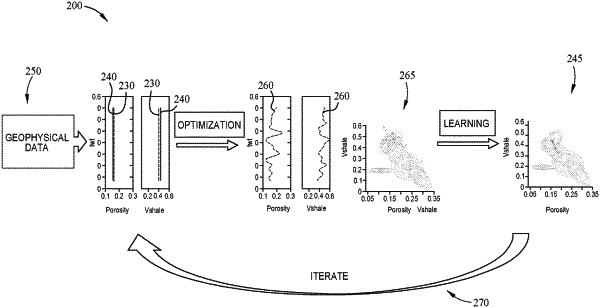| CPC G01V 99/005 (2013.01) [E21B 49/00 (2013.01); G01V 1/282 (2013.01); G01V 1/306 (2013.01); G01V 11/00 (2013.01); G06F 30/27 (2020.01); G06N 3/08 (2013.01); E21B 2200/20 (2020.05); G01V 2210/614 (2013.01); G01V 2210/6242 (2013.01); G01V 2210/6244 (2013.01); G01V 2210/667 (2013.01)] | 26 Claims |

|
1. A method for modeling a subsurface region, comprising:
obtaining a trained machine learning network, the trained machine learning network being trained at a frequency of training data that is matched to an expected frequency of input data to which the machine learning network is applied;
obtaining an initial petrophysical parameter estimate;
applying the trained machine learning network to the initial petrophysical parameter estimate to predict a geologic prior model;
obtaining geophysical data for the subsurface region;
obtaining geophysical parameters for the subsurface region; and
performing a petrophysical inversion with the geologic prior model, geophysical data, and geophysical parameters to generate a rock type probability model and an updated petrophysical parameter estimate;
wherein each one of (i) applying the trained machine learning network and (ii) performing the petrophysical inversion is carried out using a geophysical data analysis system.
|